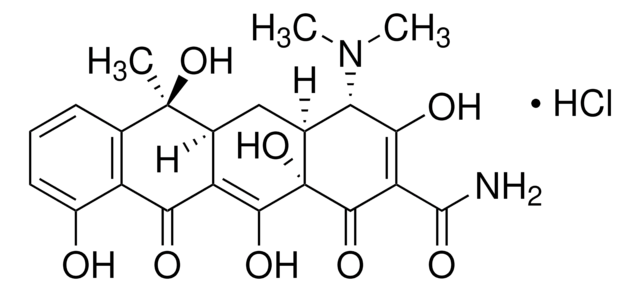939331
Nickel(II) sulfate hexahydrate

≥99.99% trace metals basis
Synonyme(s) :
Nickelous Sulfate, Hexahydrate, Battery grade nickel sulfate, Nickel monosulfate hexahydrate, Nickel sulphate hexahydrate
About This Item
Produits recommandés
Type
(High purity Salts)
Niveau de qualité
Essai
≥99.99% trace metals basis
98-102% (EDTA, complexometric)
Forme
powder or crystals
Impuretés
≤1000 ppm trace metals basis
Couleur
faint blue to dark blue-green
pH
4.3-4.7 (20 °C, 100 g/L in water)
Solubilité
water: soluble
Densité
2.07 g/cm3 at 20 °C
Traces d'anions
chloride (Cl-): ≤20 ppm
Traces de cations
Al: <50 ppm
Ca: <50 ppm
Co: <50 ppm
Cu: <50 ppm
Fe: <50 ppm
K: <50 ppm
Mg: <50 ppm
Na: <50 ppm
Pb: <50 ppm
Zn: <50 ppm
InChI
1S/Ni.H2O4S.6H2O/c;1-5(2,3)4;;;;;;/h;(H2,1,2,3,4);6*1H2/q+2;;;;;;;/p-2
Clé InChI
RRIWRJBSCGCBID-UHFFFAOYSA-L
Vous recherchez des produits similaires ? Visite Guide de comparaison des produits
Description générale
Application
Therefore, Nickel(II) sulfate hexahydrate has been widely used as a key component for the synthesis of Cathode for Lithium-ion batteries. - Spherical NCM 622 and Li[Ni0.9Co0.05Mn0.05]O2 (NCM 900505) were synthesized via a co-precipitation method using Nickel(II) sulfate hexahydrate. In order to achieve the desired energy density, it is necessary to maximize both the nickel content in the cathode and the cutoff voltage. [] - to synthesis single-crystal, Ni-rich NCM and polycrystalline NCM cathodes with various Ni content by coprecipitation method . These Ni-rich layered cathodes like NCM, NCA, and NCMA ([Ni1–x–yCox(Mn and/or Al)y]O2) are the top choices for powering upcoming electric vehicles. It is found that polycrystalline NCM cathodes are prone to intergranular microcracking during cycling, single crystal NCM cathodes demonstrate resilience against mechanical fracture, even under highly charged conditions or repeated cycles. Due to limited lithium-ion diffusion pathways, the electrochemical performance of single crystal -NCM cathodes, particularly in terms of capacity and cycling stability, is lower compared to that of polycrystalline-NCM cathodes. The difference in the electrochemical performance of single crystal -NCM and polycrystalline-NCM cathodes grows as the Ni fraction increases. In addition, Nickel(II) sulfate hexahydrate is widely used for electroplating for producing metallic coatings. Nickel(II) sulfate hexahydrate can also be used as a catalyst in: -Pt50Ni50 catalysts supported on MCM-41 were produced using wet co-impregnation. These catalysts were then employed for hydrogenation reactions of benzene in gas phase. The morphology of the metal phase within the catalysts has a notable impact on the conversion of benzene to cyclohexane. Factors like reduction temperature, NaBH4 concentration, and reduction medium influence the particle morphology. []
Caractéristiques et avantages
- Water soluble
- Medium purity (99.9%)
- Low trace metals in ppm level
- Cost effective Suitable for battery applications
- Recycled catalyst
Mention d'avertissement
Danger
Mentions de danger
Conseils de prudence
Classification des risques
Acute Tox. 4 Inhalation - Acute Tox. 4 Oral - Aquatic Acute 1 - Aquatic Chronic 1 - Carc. 1A Inhalation - Muta. 2 - Repr. 1B - Resp. Sens. 1 - Skin Irrit. 2 - Skin Sens. 1 - STOT RE 1 Inhalation
Organes cibles
Respiratory Tract
Code de la classe de stockage
6.1C - Combustible acute toxic Cat.3 / toxic compounds or compounds which causing chronic effects
Classe de danger pour l'eau (WGK)
WGK 3
Point d'éclair (°F)
Not applicable
Point d'éclair (°C)
Not applicable
Faites votre choix parmi les versions les plus récentes :
Certificats d'analyse (COA)
Désolés, nous n'avons pas de COA pour ce produit disponible en ligne pour le moment.
Si vous avez besoin d'assistance, veuillez contacter Service Clients
Déjà en possession de ce produit ?
Retrouvez la documentation relative aux produits que vous avez récemment achetés dans la Bibliothèque de documents.
Notre équipe de scientifiques dispose d'une expérience dans tous les secteurs de la recherche, notamment en sciences de la vie, science des matériaux, synthèse chimique, chromatographie, analyse et dans de nombreux autres domaines..
Contacter notre Service technique











